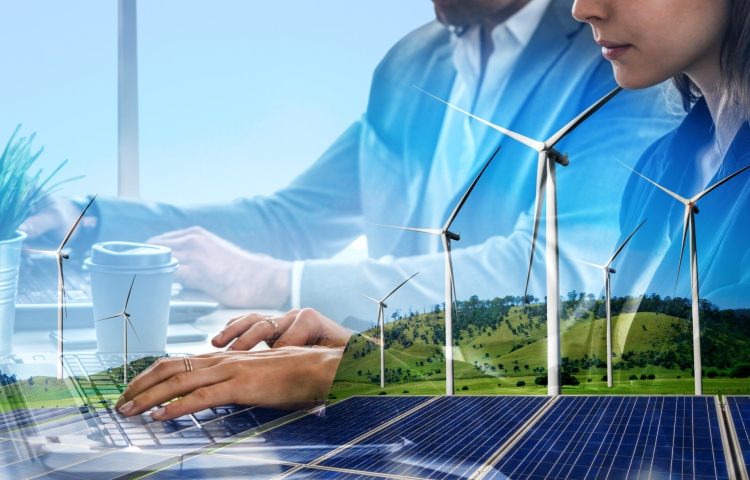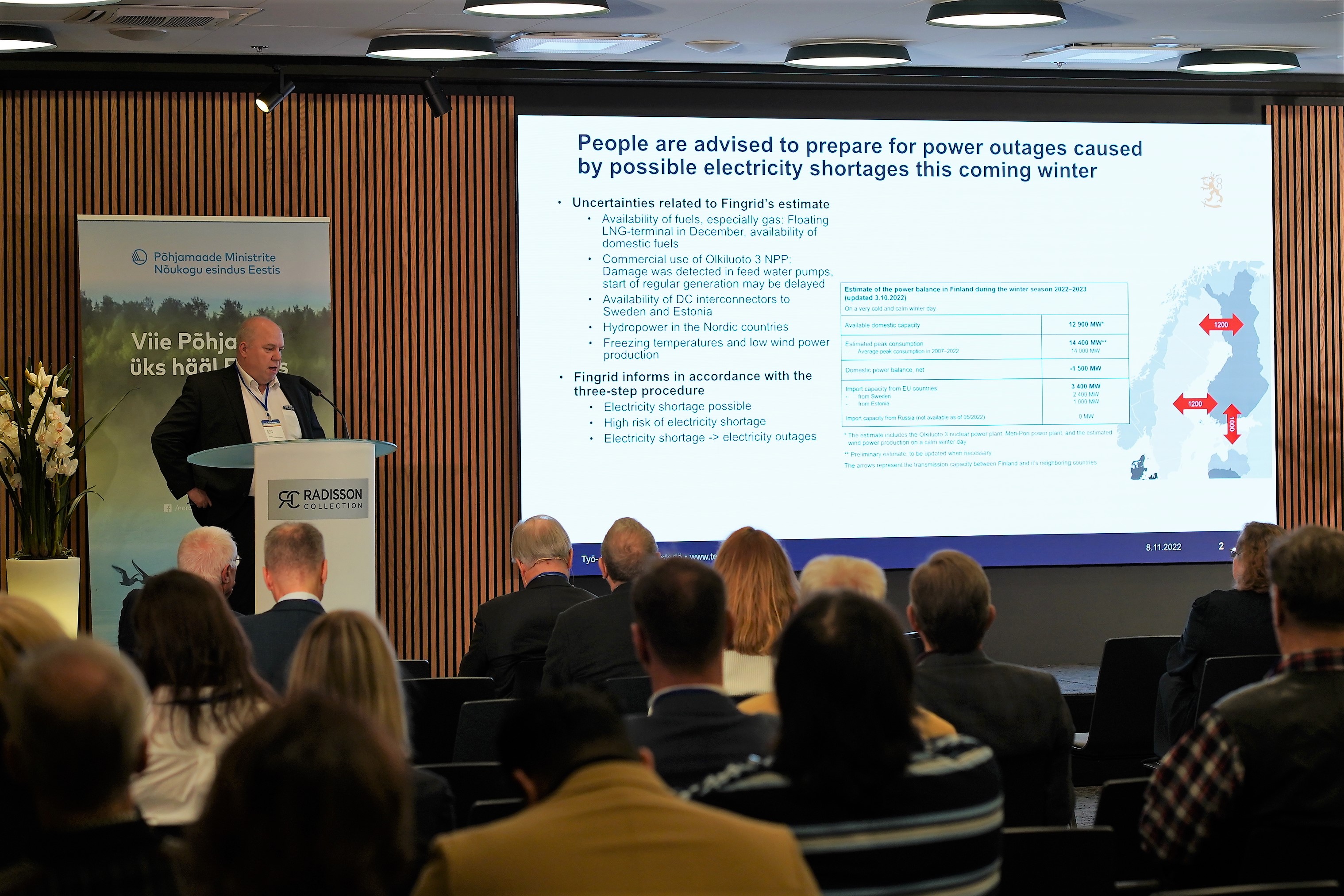“There are two big challenges facing the Estonian economy at the moment,” says Peep Siitam, the director of and one of the shareholders in Energiasalv: “the lack of qualified labour, and dirty and expensive electricity. If you can’t get electricity at a reasonable price, the economy’s just not going to develop. Green energy’s the only way to give companies here, and foreign investors, a sense of security and the stability they need in order to create new jobs. There just isn’t the capacity in Estonia at the moment to produce electricity cheaply and in a way that ensures energy security, and that’s stopping enterprise from developing.”
Energy expert and Gren business development manager Jaak Tuksam agrees. “Stable, affordable electricity is the key to economic development,” he says. “The kind of price volatility that sees people having to pay 4000 euros per megawatt hour at its peak hardly fills local companies with certainty. And the fact that for short periods the price falls to zero doesn’t help either.”
Siitam says that renewable energy solutions and controllable local capacities need to be established. “That will guarantee continuity of supply and energy security, and encourage investment,” he suggests.
Dependence on others
Siitam says no foreign investor wants to invest in an Estonia that remains reliant on the capacities of other countries. He names the network fees and regulations on which electricity importers inevitably depend as problems, as well as the possibility that foreign partners selling Estonia electricity could adopt a protectionist stance in crisis situations. “Take Norway, which came to the conclusion last year that they don’t necessarily have to sell their electricity to anyone else,” he cautions. “So there might be a generator at the other end of the cable somewhere, but no guarantee you can actually buy the electricity. The market itself guarantees nothing if there’s a reticence to sell.”
He says that even if electricity is being produced cheaply and greenly, a competitive industry cannot be built on it if it is not being generated locally. “Price stability has to be guaranteed,” he says. “One of the things foreign entrepreneurs base their decisions on in terms of where to invest their money is the availability of local, green, affordable electricity. If there’s no guarantee that capacities will be available 24/7/365, unobstructed by risks and regulations, then it’s no different from me not wanting to build myself a house in the middle of a field where there’s zero infrastructure: foreign investors simply won’t come here until stable access to local electricity is ensured.”
In addition to protectionism and regulatory threats, dependence on foreign energy markets also means, among other things, being hostage to the problems on those markets. Like Siitam, experts attending last year’s Nordic-Baltic energy conference gave the greatest cause of concern as being potential restrictions on imports from other countries in cases where, for instance, a specific country selling energy is faced with production difficulties that threaten their own energy supply.
Thor Erik Grammeltvedt, the vice-president of the Norwegian power system operator Statnett, says low water levels in reservoirs and issues with the provision of fossil fuels in Poland are perfect examples of such a scenario. “Nor is nuclear capacity something you can always rely on,” he adds, referring to recent problems at the Olkiluoto nuclear plant in Finland. Petteri Kuuva from the Finnish Ministry of Trade and Industry agrees. “The shortage of gas, the faults in the water pumps at Olkiluoto, the low capacity of the reservoirs in Norway and the lack of wind are all things that could have an impact on how much electricity a country can sell,” he explains, adding that 2022 showed how the hydropower supply situation in Norway was worse than usual.
Taking responsibility
Experts see local, controllable, renewable capacities as the way to avoid being as susceptible to such situations. “As a society we need to be prepared to assume responsibility for nuclear structures as well, even if they represent long-term environmental risks,” Tuksam advises. “Although only, of course, if conditions on the energy market are right for them to be built. Nuclear energy’s a divisive issue, but I don’t personally see any problem in building nuclear power stations. I’d happily live next to one so long as it wasn’t an eyesore and didn’t make too much noise!”
However, nuclear plants raise the question of whether their capacities are entirely controllable. “Nuclear power stations are designed as base stations, just like oil shale or coal-fired power stations,” Siitam explains. “You can control them under certain circumstances, but it’s economically unfeasible.” Tuksam adds that underutilising and regulating a nuclear plant results in the loss of energy. “But you have to take into account that even if you underutilise it, a nuclear power station will still generate heat, and that heat will be lost,” he explains.
At the same time, Siitam says there are problems with wind and solar capacities. For example, it is impossible to predict with any precision wind and solar volumes, and this in a situation where in the near future electricity will have to be sold to the day-ahead energy market at precision intervals of 15 minutes. “If you predict how much solar power you’ll generate and there’s always at least a 10% margin of error built into it, you need to remember that if your prediction is off, then you still have to sell the amount of electricity you promised, which means you’ll most likely have to buy it in from elsewhere on the market and fork out a lot of money to do so,” he explains.
Finland places responsibility on individuals
In addition to countries establishing their own capacities, Kuuva proposed another solution at the conference which the Finns are already successfully implementing: reducing electricity use at the individual level. Namely, since the second half of 2022 Finland has been calling on its population to reduce its power consumption by 5% during peak hours. “The aim is for 95% of households in the country to cut back on their use of electricity,” he says.
Simple recommendations have been made to meet this objective, including timing power consumption. “That means doing what you can to use less electricity between 8.00 and 10.00 in the morning and between 4.00 and 8.00 in the evening,” he explains. “We’re also recommending that heating be kept at slightly lower temperatures, since one single degree equates to 5% less use of electricity.” Other suggestions which have been made are shorter showers, fewer saunas and more limited use of underfloor heating.
Kuuva says these recommendations have had a significant impact. “We saw a 7% decrease in electricity consumption in September and an 8% decrease in October compared to the same periods the year before,” he reveals.
Petteri Kuuva at the Nordic-Baltic Energy Conference 2022
Solar solutions
For their part, Estonians have taken to installing solar panels on the roofs of their homes and apartment buildings. But is this a sensible way of assuming individual responsibility? “It’s definitely worth having solar panels fitted for your own consumption, but only for that, not for selling power to the local network,” Siitam advises. How much energy households need can be determined, he says, from their power bills.
Tuksam adds that in selling energy to the network it should be borne in mind that doing so involves fees and that these depend on Eesti Energia. Moreover, fees not only have to be paid when selling electricity to the network, but also later for the prepayment that has amassed when buying electricity. “Someone has to maintain the network,” he remarks.
Attention should also be turned to the time it takes for investments in solar panels to pay themselves off. Tuksam says they are most profitably installed in places where no other sources of electricity are available. “But then you have to take into account that they only really do the job you want them to do when the sun’s out in summer,” he cautions. “In any case, whether the investment pays off depends on the market price of electricity. If it’s 4000 euros per megawatt hour, then it’ll pay for itself very quickly indeed.”
The annual Nordic-Baltic Energy Conference is organised by the Estonian office of the Nordic Council of Ministers. The theme of the 2022 conference was ‘Pressure on energy policy and accelerated change on the Nordic-Baltic energy market’, with discussions of price stability, energy security, continuity of supply and the achievement of climate goals.
The conference can be viewed online here.


